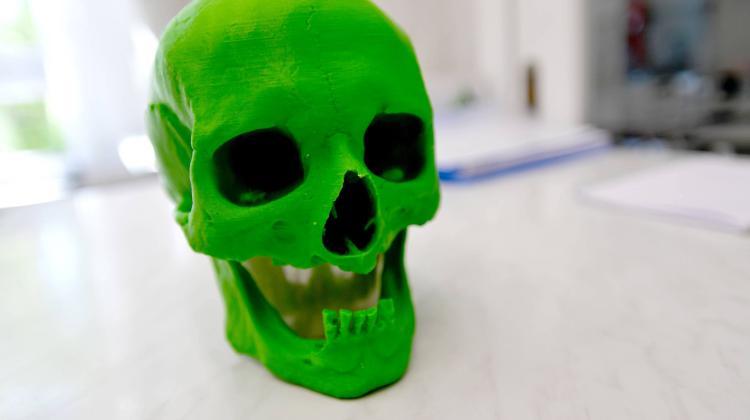Zachodniopomorskie/ Scientists will reconstruct the appearance of the "witch of Kamień Pomorski"

Scientists from the Pomeranian Medical University in Szczecin want to use a 3D model of the skull to reconstruct the appearance of the woman living at the turn of the 18th century, whose remains were found in Kamień Pomorski. She was probably the victim of a witch trial.
"This is a very interesting addition to the research on the discovered skeleton. There is a lot of interest in the appearance of this person" - says the head of the Forensic Genetics Unit of the Pomeranian Medical University in Szczecin, Dr. Andrzej Ossowski. He adds that the reconstruction of the woman`s face may also have a humanitarian dimension.
"We want to show that with the help of modern methods, we are able to replace skeletons that are very common in museums with 3D models based on research. I think that in the future, we should not display human remains in museums, especially that we already have the technology to replace them with models" - says Ossowski.
To reconstruct the face of the woman from Kamień Pomorski, researchers want to use a 3D printed skull model, created at the Sehn Institute of Forensic Research in Kraków.
"We intend to perform two reconstructions - a virtual one, using 3D modelling software, and another with Gerasimov`s technique used in forensic medicine and forensic anthropology. Onto the three-dimensional model, we will apply layers of plastic material that will correspond to soft tissue layers" - Ossowski explains.
Archaeologists discovered the skeleton in Kamień Pomorski in 2014. The remains were considered to be an "anti-vampiric burial": a piece of brick was placed in the mouth, and the femur and tibia were pierced; researchers suspected that these were traces of stakes driven into the legs that, according to folk beliefs, were intended to stop the deceased from rising from the grave.
According to the anthropological analysis performed after the discovery, the remains were supposed to belong to a man who was about 45-55 years old at the time of death. It was estimated that he had dark hair and eyes and was about 160 cm tall. The term "the vampire of Kamień" appeared in media reports, including foreign ones.
After further genetic, anthropological (using new methods) and forensic medicine research, as well as 3D scans and computed tomography of the entire skeleton, scientists from the Pomeranian Medical University determined unequivocally that the skeleton belonged to a woman. According to the research, she was 65 or older at the time of death, nearly 170 cm tall, had blond hair and blue eyes. Ethnicity has been determined as typically European (haplogroup H).
The injuries found on the skeleton occurred when the woman was still alive. She died as a result of those injuries, but not immediately. Researchers hypothesized that the woman was accused of witchcraft: the torture she was subjected to could include piercing the limbs.
The burial method could be a confirmation that the woman was considered to be a witch: the brick in her mouth could be a means of "protection" against black magic "from beyond the grave."
Researchers dated the burial to the turn of the 18th century. In Pomerania, witch trials were held until the mid-19th century. In this region, the trials were secular, and in the area from which the skeleton originated they were held by the chapter in Kamień Pomorski.
The researchers plan to present the face of the "witch of Kamień Pomorski" in a few months.
PAP - Science in Poland, Elżbieta Bielecka
tr. RL
emb/ agt/ kap/
Przed dodaniem komentarza prosimy o zapoznanie z Regulaminem forum serwisu Nauka w Polsce.















